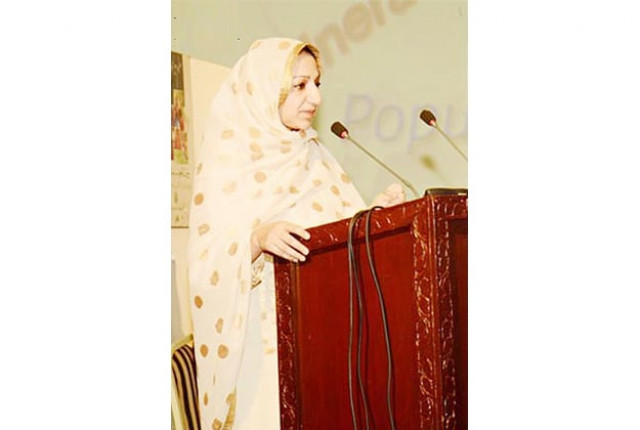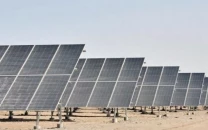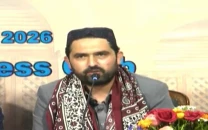Vulnerable populations: Population risks, post-disaster healthcare issues discussed
Women face higher mortality rates in the absence of reproductive healthcare.

Federal Minister for National Health Services, Regulation and Coordination Saira Afzal Tarar. PHOTO: NNI
“The country’s 191 million population is alarming,” Federal Minister for National Health Services, Regulation and Coordination Saira Afzal Tarar said while addressing a seminar here on Thursday.
She added that every year, 3.5 million people were added to the population showing an annual growth of 1.92 per cent.
According to estimates the population will reach 210 million by 2020. Based on these figures the country will find it difficult to sustain the rapidly growing population, with hardly any improvement in quality of healthcare services, the minister said.
“We all talk about corruption and terrorism, but the biggest bomb is our ever increasing population,” she said.
Minister for States and Frontier Regions (SAFRON) Lt-Gen (retd) Abdul Qadir Baloch said that Pakistan should learn a lesson from Bangladesh.
“They realised well before us the need to keep their population in control, even though they were a populous majority compared to West Pakistan at the time of [their] independence. The situation has now turned upside down; the population ratio of Bangladesh to that of Pakistan is now 40:60,” he said.
Director-General Population Abdul Ghaffar Khan said even population control measures such as adequate health counselling, contraceptives and medicines, cannot keep pace with increasing demands.
“The situation warrants extreme measures. Our hopes of development cannot be fulfilled if we do not keep population control approaches in the spotlight” he said.
He said girls and women face greater risks such as sexual violence and higher mortality rates due to the absence of reproductive health facilities, he added.
UNFPA Representative Sarah Masale said Pakistan was one of the most disaster-prone countries in the world. She said men and women who survive crisis bear immense difficulties in taking care of those most in need of relief, neglecting their own needs in the process.
National Health Emergency Preparedness and Response Network Operations Deputy-Director Dr Sabina Durrani said “In any emergency, an estimated 20% of the women belong to a reproductive age group, 15% are expected to be in an emergency situation, and 5% usually end up in life threatening situations due to a lack of adequate healthcare facilities.”
A skit titled ‘Gustakhi Muaaf’, aimed at creating awareness of patients who turn to welfare centres for women and children was also played at the event.
Published in The Express Tribune, August 28th, 2015.



















COMMENTS
Comments are moderated and generally will be posted if they are on-topic and not abusive.
For more information, please see our Comments FAQ